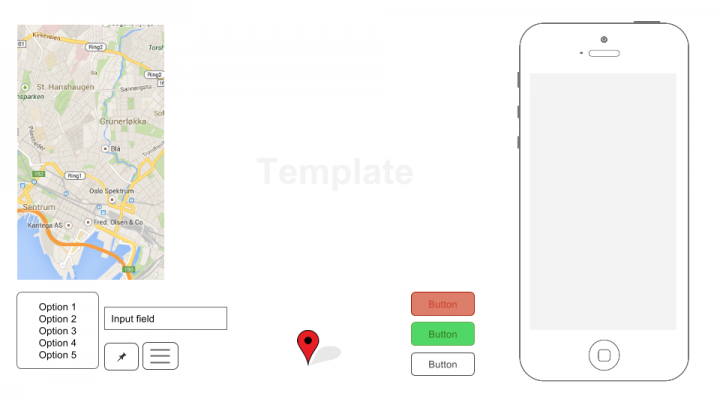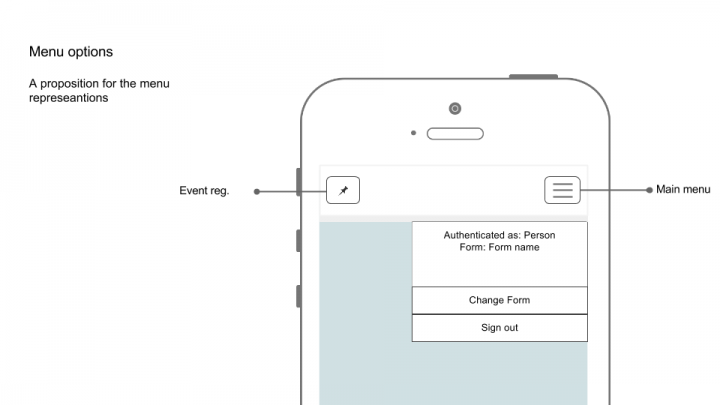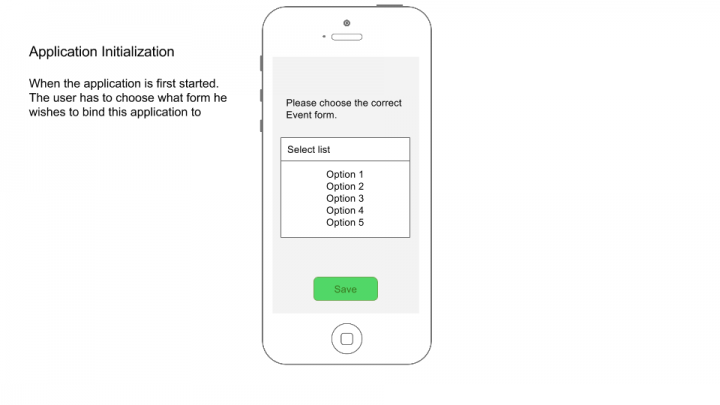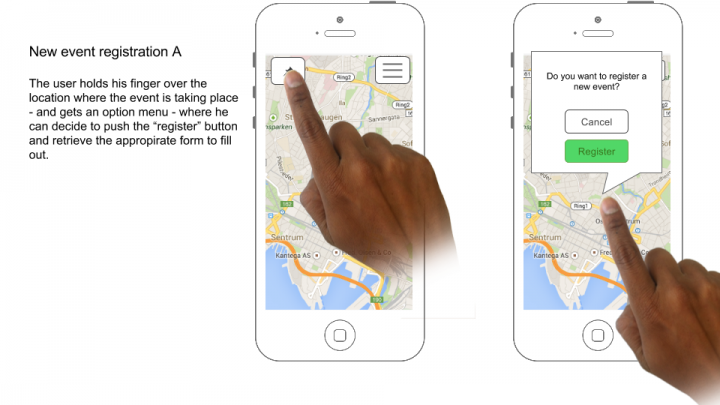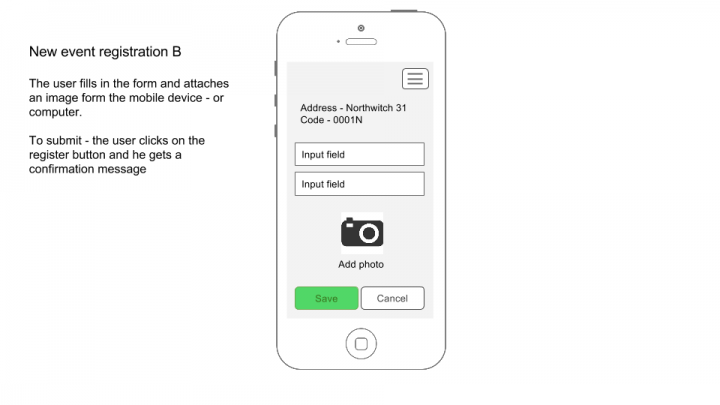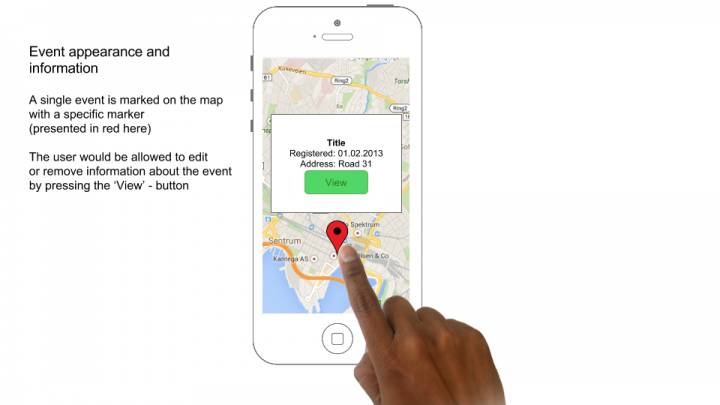Difference between revisions of "Geo-1"
m |
|||
| (16 intermediate revisions by the same user not shown) | |||
| Line 1: | Line 1: | ||
| − | = | + | = Introduction = |
| − | As an effect of providing data samples of higher quality. It is wishful to develop and deploy an application that <br>that is able to log events with relation to location information. Such an application would be used to geographically tag information - making it easier to visualize information in context. | + | As an effect of providing data samples of higher quality. It is wishful to develop and deploy an application that <br>that is able to log events with relation to location information. Such an application would be used to geographically tag information - making it easier to visualize information in context.<br> |
| − | + | Application of such a system could be:<br>- to visualize how outbreaks occur<br>- to better allocate resources to specific areas based on requirements. <br> | |
| − | |||
| − | Application of such a system could be: | ||
| − | |||
| − | - to visualize how outbreaks occur | ||
| − | |||
| − | - to better allocate resources to specific areas based on requirements. <br> | ||
= <span style="line-height: 1.5em;">Members</span> = | = <span style="line-height: 1.5em;">Members</span> = | ||
| Line 15: | Line 9: | ||
Ying Li<br>Henrik Nårstad<br>Marcel Eggum<br>Henrik Vest Simonsen<br> | Ying Li<br>Henrik Nårstad<br>Marcel Eggum<br>Henrik Vest Simonsen<br> | ||
| − | = Summary of requirements<br> = | + | = Summary of requirements<br> = |
(Who is the application intended for?)<br><span style="line-height: 1.5em;">- A user should be able to register single event entries with information about the context and location.</span><br>- These entries need not be related to other, existing entitites from the DHIS2 system. But act as single objects in the system. | (Who is the application intended for?)<br><span style="line-height: 1.5em;">- A user should be able to register single event entries with information about the context and location.</span><br>- These entries need not be related to other, existing entitites from the DHIS2 system. But act as single objects in the system. | ||
| Line 29: | Line 23: | ||
= Task Management<br> = | = Task Management<br> = | ||
| − | Our project tasks and user-stories are created and maintained in | + | Our project tasks and user-stories are created and maintained in Github. |
| − | The | + | The list is publicly available, and can be viewed @ [https://github.com/plingpling/GEO/issues Geo-Location Github] |
= Time Schedule<br> = | = Time Schedule<br> = | ||
| − | === Milestone 1 : === | + | === Milestone 1 - Week 1-2 : === |
Wiki is created. Team members have successfully set up DHIS2. <br>HTML, CSS and JS workshops are completed | Wiki is created. Team members have successfully set up DHIS2. <br>HTML, CSS and JS workshops are completed | ||
| − | === Milestone 2: === | + | === Milestone 2 - Week 2-3: === |
Application requirements and user stories are written down. <br>Low fidelity prototypes are drawn. | Application requirements and user stories are written down. <br>Low fidelity prototypes are drawn. | ||
| − | == | + | === Milestone 3 - Week 3-4: === |
| + | |||
| + | Front-end for web-application is constructed - with temporary - hardcoded values. <br>Baseline for the application backend is complete. | ||
| + | |||
| + | <span style="font-size: 18px; font-weight: bold; line-height: 1.5em;">Milestone 4 - Week 4-6: </span> | ||
| + | |||
| + | Backend is in a state where it represents a fully functional version of the application with a set of <br>requirements that represent a minimum to pass the course. | ||
| + | |||
| + | === Milestone 5 - Week 6-7: === | ||
| + | |||
| + | Backend and Frontend is extended to include additional functionality - like input validation, address translation, image upload. etc. At the same time - an Android port should be implemented and tested. | ||
| − | + | = Prototypes, Design = | |
| − | + | [[Image:GEO1-1.png|720px]] [[Image:GEO1-2.png|720px]] [[Image:GEO1-6.png|720px]] [[Image:GEO1-5.png|720px]] [[Image:GEO1-4.png|720px]] [[Image:GEO1-3.png|720px]] | |
| − | + | = Repository = | |
| − | + | We choose to utilise Github as our application repository. You can visit the page at the following location: [https://github.com/plingpling/GEO https://github.com/plingpling/GEO] | |
| − | + | The application can be downloaded from the following [https://github.com/plingpling/GEO/archive/master.zip location]. | |
<br><br> | <br><br> | ||
Latest revision as of 11:53, 8 December 2013
Contents
Introduction
As an effect of providing data samples of higher quality. It is wishful to develop and deploy an application that
that is able to log events with relation to location information. Such an application would be used to geographically tag information - making it easier to visualize information in context.
Application of such a system could be:
- to visualize how outbreaks occur
- to better allocate resources to specific areas based on requirements.
Members
Ying Li
Henrik Nårstad
Marcel Eggum
Henrik Vest Simonsen
Summary of requirements
(Who is the application intended for?)
- A user should be able to register single event entries with information about the context and location.
- These entries need not be related to other, existing entitites from the DHIS2 system. But act as single objects in the system.
- All entries should be presented on a dynamic map. With the ability to filter entries by categories.
- Location information about an entry should be based on GPS based latitude and longditude coordrinates.
- It is wishful to bind multimedia elements to an entry. As an example, it would be preferable to attach one or more images to a single entry point.
- The application should be available as an DHIS2 Web-Application and an Android based mobile Application
Task Management
Our project tasks and user-stories are created and maintained in Github.
The list is publicly available, and can be viewed @ Geo-Location Github
Time Schedule
Milestone 1 - Week 1-2 :
Wiki is created. Team members have successfully set up DHIS2.
HTML, CSS and JS workshops are completed
Milestone 2 - Week 2-3:
Application requirements and user stories are written down.
Low fidelity prototypes are drawn.
Milestone 3 - Week 3-4:
Front-end for web-application is constructed - with temporary - hardcoded values.
Baseline for the application backend is complete.
Milestone 4 - Week 4-6:
Backend is in a state where it represents a fully functional version of the application with a set of
requirements that represent a minimum to pass the course.
Milestone 5 - Week 6-7:
Backend and Frontend is extended to include additional functionality - like input validation, address translation, image upload. etc. At the same time - an Android port should be implemented and tested.
Prototypes, Design
Repository
We choose to utilise Github as our application repository. You can visit the page at the following location: https://github.com/plingpling/GEO
The application can be downloaded from the following location.
